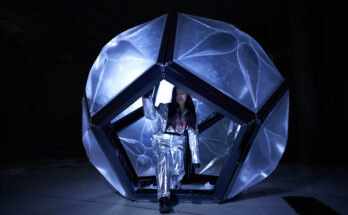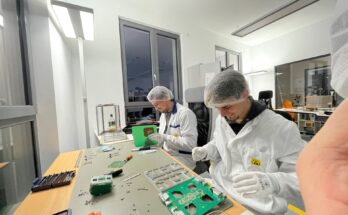Enter the realm of low Earth orbit, where the International Space Station (ISS) serves as a beacon of innovation and a testament to human ingenuity. The ISS National Laboratory® sponsors groundbreaking research and development (R&D) pioneering new technologies. This photo essay invites you to learn more about specific projects that showcase how researchers, companies, and organizations are taking advantage of the unique conditions available through the ISS National Lab—microgravity, extreme conditions, and a unique vantage point—to solve significant technology development challenges and pave the way for breakthroughs that benefit humanity here on Earth. Prepare to be captivated by the space-based R&D now advancing technology and commercializing products approximately 250 miles above our heads.
Developed by StemRad and Lockheed Martin, the AstroRad Vest provides personal radiation protection for astronauts when traveling beyond low Earth orbit.
Boeing partnered the University of Queensland on an investigation that could help reduce diseases transmitted from touching surfaces in settings such as aircraft cabins, healthcare facilities, or public transportation.
Through testing on the exterior of the ISS, startup Orbital Sidekick advanced its hyperspectral sensor technology and now operates a constellation of commercial satellites that provide valuable Earth monitoring services to help customers find pipeline leaks, assess crop health, identify wildfire risks, and more.
NASA’s Astrobees, a trio of free-flying robots on the ISS, are testing valuable new technologies, such as specialized microphone technology that can identify anomalies in equipment and spacecraft by interpreting changes in sound.
Can an unmodified commercial off-the-shelf computer use specially designed software to withstand the harsh conditions of space? Hewlett Packard Enterprise’s Spaceborne Computer-1 (SBC-1) and its follow-on mission, SBC-2, took on the challenge.
California-based startup Gitai launched an autonomous robotic arm system to the ISS to test its ability to operate in the harsh space environment and in potentially dangerous environments on Earth like deep sea excavation or disaster relief.
Using a specialized virtual reality (VR) camera on the ISS, Felix & Paul Studios is allowing people on Earth to see the world through the eyes of astronauts on station through “The Infinite” experience.
To develop technology that can safely deorbit passive objects containing liquid in space, like satellites carrying fuel, Airbus conducted the SPHERES Tether Slosh investigation.
Orbit Fab’s Gas Stations in Space™ are paving the way for a more sustainable space-based economy with in-orbit fueling capabilities.
University of Notre Dame scientists sent bubble dynamics research to the ISS to help improve medical diagnostics and potential new methods for water purification.
A scientist who devoted her career to helping people who lost limbs took her company’s research to space to develop lifelike prosthetics.
Visit our Flickr album for high-resolution images to view and download.
From the 1st launch back in 2013 to the most recent one, take a look back at all the science that launched to the ISS National Lab!
ISS National Laboratory® is a registered trademark of the National Aeronautics and Space Administration (NASA), used with permission. The ISS National Laboratory® is managed by the Center for the Advancement of Science in Space, Inc. under Cooperative Agreement with NASA. NASA Partner logo is used with permission. © 2011-2024 The Center for the Advancement of Science in Space, Inc. (CASIS), a 501 (c)(3) Corporation.



